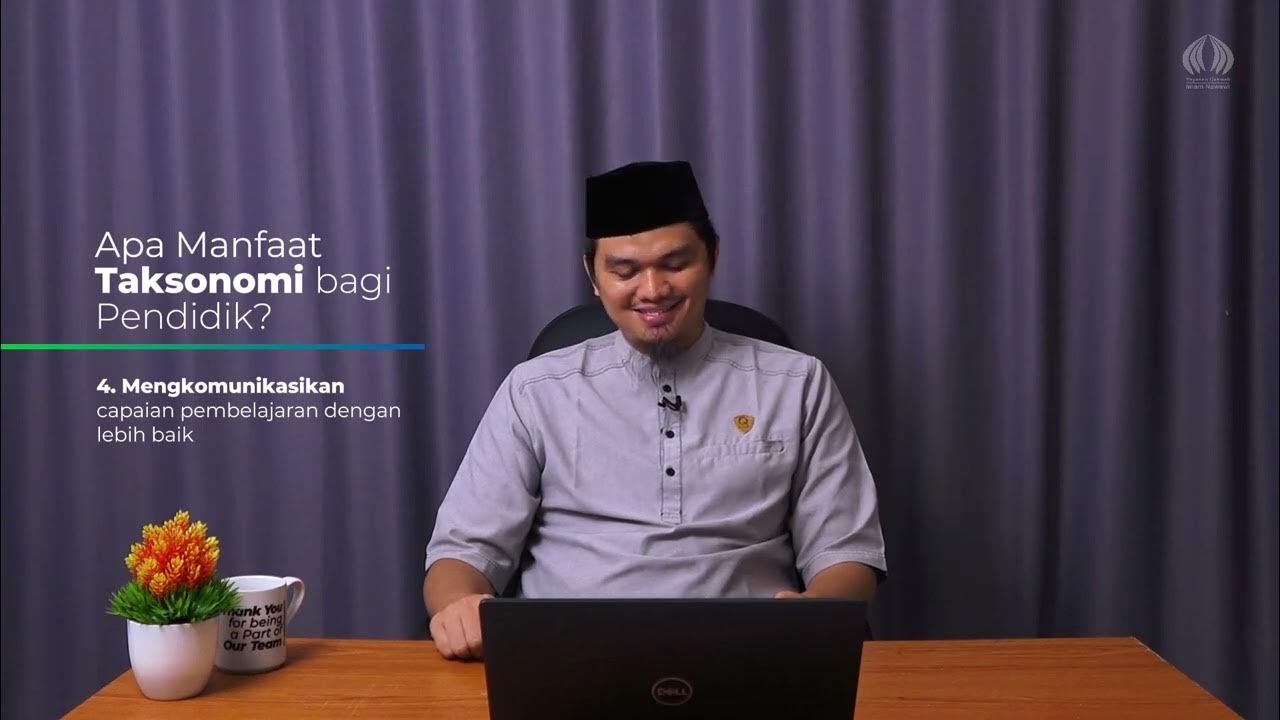Sudah Tahu Belum ? Apa Fungsi dan Tujuan Penilaian dalam Pembelajaran
Summary
TLDRThis video discusses the importance of assessment in education, highlighting how traditional methods often focus on cognitive abilities while neglecting affective and psychomotor aspects. It explores the different types of assessment—such as performance, project, and self-assessment—and their roles in measuring student learning. The video also emphasizes the need for accurate, fair, and constructive assessment methods to avoid negative consequences like inaccurate evaluations, low motivation, or inefficient resource use. It explains the functions and goals of assessment, like diagnosing student needs, tracking progress, and providing feedback to improve teaching and learning outcomes.
Takeaways
- 😀 Importance of subscribing and liking the video to stay updated with future content.
- 😀 Traditional assessment models often focus on cognitive skills and overlook affective and psychomotor aspects.
- 😀 It’s crucial for both teachers and students to assess not only the product but also the learning process.
- 😀 Assessment involves systematic steps: planning, developing tools, gathering data, and interpreting results to evaluate student competence.
- 😀 Various assessment techniques include performance, attitude, written tests, projects, products, portfolios, and self-assessment.
- 😀 Assessment is a process of collecting, analyzing, and interpreting information to make decisions about student learning.
- 😀 The goal of assessment is to determine whether students meet the required competencies and to provide constructive feedback.
- 😀 Key functions of assessment include formative, summative, diagnostic, and placement, each with specific purposes.
- 😀 Assessment helps in tracking students' learning progress, guiding teaching methods, and improving educational outcomes.
- 😀 Choosing the wrong assessment method can lead to inaccurate results, unfair treatment, and demotivation.
- 😀 It’s important to select the right assessment methods aligned with the goals to ensure fairness, accuracy, and effective feedback.
Q & A
What was the focus of traditional assessment methods in education?
-Traditional assessment methods primarily focused on evaluating cognitive skills through objective tests, often neglecting affective and psychomotor aspects of learning.
Why is it important to assess both the process and the product in learning?
-It is important to assess both the process and the product in learning to understand whether the educational goals are being achieved, not just the final outcome but also how students are progressing during the learning process.
What is the role of feedback in assessment?
-Feedback in assessment plays a crucial role in helping students understand their strengths and weaknesses, allowing them to improve and continue their learning. It also helps teachers refine their teaching methods.
What are some common techniques used for assessment in education?
-Common assessment techniques include performance assessments, attitude assessments, written tests (paper and pencil), project assessments, product assessments, portfolio assessments, and self-assessment.
What does formative assessment aim to achieve?
-Formative assessment aims to provide feedback to both teachers and students, allowing adjustments in teaching methods and learning strategies, and to support students who need remedial help in mastering the material.
How does summative assessment differ from formative assessment?
-Summative assessment is used to evaluate student performance at the end of an instructional period, such as grading for a course, whereas formative assessment is used to monitor and guide student progress during the learning process.
What are the functions of diagnostic assessments?
-Diagnostic assessments help to identify the strengths and weaknesses of students, including their psychological, physical, and environmental factors, and assist in providing targeted solutions to address learning difficulties.
Why is the wrong choice of assessment method potentially harmful?
-Choosing the wrong assessment method can lead to inaccurate evaluations, unfair treatment of students, diminished motivation, negative impacts on work culture, and inefficient use of resources.
What are the consequences of inaccurate assessments?
-Inaccurate assessments can result in faulty evaluations of a student's abilities, leading to poor decision-making, such as placing students in the wrong academic groups or denying them opportunities they deserve.
What should be done if a teacher realizes they've chosen the wrong assessment method?
-If a teacher realizes they've chosen the wrong assessment method, they should acknowledge the mistake, make necessary adjustments, and choose a more suitable method to improve the validity and fairness of the assessment.
Outlines

This section is available to paid users only. Please upgrade to access this part.
Upgrade NowMindmap

This section is available to paid users only. Please upgrade to access this part.
Upgrade NowKeywords

This section is available to paid users only. Please upgrade to access this part.
Upgrade NowHighlights

This section is available to paid users only. Please upgrade to access this part.
Upgrade NowTranscripts

This section is available to paid users only. Please upgrade to access this part.
Upgrade Now5.0 / 5 (0 votes)





